|
|
 |
16th IUVSTA International Summer School on
Physics at Nanoscale
12th - 17th June 2017
Devět Skal, Czech Republic
|
 |
Dave Cahen
Bio-molecular Electronics: Electron Transport across Proteins
Perovskite solar cells
Department of Materials and Interfaces, Faculty of Chemistry, Weizmann Institute
Born and raised in the Netherlands, David Cahen is professor in the Materials & Interfaces dept. at the Weizmann Institute of Science, WIS, which he chaired between 2007-2012. He completed a B.Sc. in chemistry & physics at the Hebrew Univ. of Jerusalem (HUJ), a Ph.D. in materials and physical chemistry at Northwestern Univ., and did postdoctoral research in biophysics of photosynthesis at HUJ and WIS. After joining the WIS faculty DC started work on solar cells, notably developing a photoelectrochemical PV cell cum battery that has been rediscovered a few times since, and the solid-state and surface chemistry of solid-state solar cell materials. This expanded into studying chemical aspects of electronic materials and devices, including fundamental chemical limits to device miniaturization and device stability. The latter provided significant scientific bases for practical development of 2nd generation solar cells. His PV work today focuses on the basic materials and device chemistry and physics of perovskite halides and cells based on these.
In parallel he explored how and when defects in materials can actually improve material quality and device performance. His solar cell interests led to work on hybrid molecular/non-molecular materials and interfaces, and into molecular electronics, which evolved into other present activities, proteins as “dopable” and otherwise truly remarkable electronic materials. Honors in the past decade include the 2008 Landau (national) prize for Chemistry, the Kolthoff prize from the Technion (2009) and the 2012 Israel Chem, Soc. Prize for excellence, for research on alternative energy sources. He is a fellow of the AVS (2011) and the MRS (2014).
He directs the WIS’ campus-wide Alternative Sustainable Energy Research Initiative and holds the Rowland and Sylvia Schaefer Professorial Chair in Energy Research.
With D. Ginley he edited the MRS/Cambridge Un. Press textbook on Fundamentals of Materials for Energy and Environmental Sustainability. They also founded “MRS Energy & Sustainability, a review journal”, both part of his activities in “Energy & Sustainability” education.
| 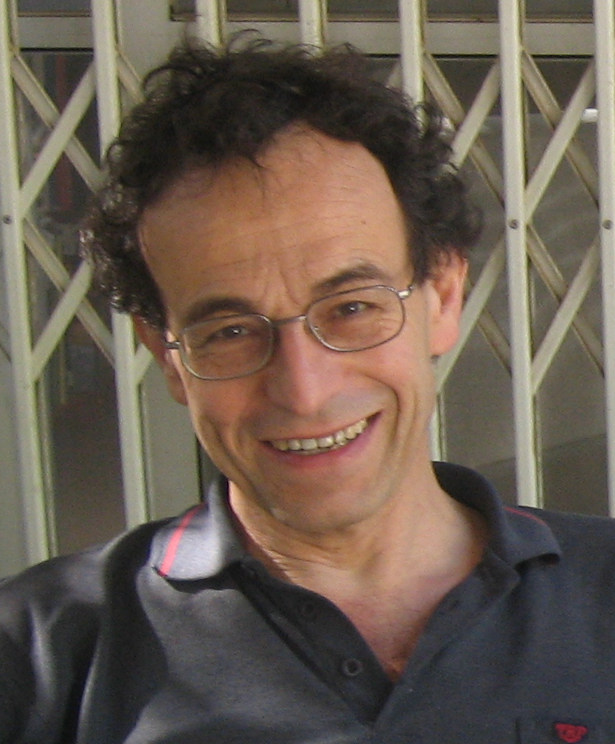 |
| [Return to top] |
Olindo Isabella
Photonic Nanostructures and Photovoltaic Devices:
1. Classical 4n2 absorption limit explained and demonstrated
2. Pushing the limit: light absorption in thin films
Photovoltaic Materials and Devices, EWI Faculty - Delft University of Technology
Olindo's areas of expertise are (i) opto-electrical modelling, (ii) characterization and implementation of advanced light management techniques in thin-film and wafer-based silicon solar cells, (iii) accurate energy yield prediction of custom and horizon-blocked PV systems. He was one of the pioneers to realize thin-film silicon solar cells on periodic gratings. He was the first to propose the concept of modulated surface textures which enable efficient light trapping over broad spectrum. He also successfully fabricated thin-film silicon solar cells with dielectric distributed Bragg reflectors, which can avoid plasmonic absorption losses in metallic reflectors. He contributed to experimentally demonstrate the classical 4n2 absorption limit and to fabricate a high performance omni-directional dielectric reflector. Recently he has been working on coupled optical and electrical modelling of optically complex structures such as multi-junction solar cells and interdigitated back contacted crystalline silicon solar cells. He is currently involved in the research of light management techniques applied to thin-film silicon, BaSi2, CIGS solar cells and transfer of such techniques to thin crystalline silicon wafer-based solar cells. Alongside with his research and development of high efficiency wafer-based silicon solar cells, Olindo is responsible for the PV Laboratory and gives lectures on PV systems. He is co-chair of Optics for Solar Energy conference within the OSA Light, Energy and the Environment Congress 2017 and of Silicon for Photovoltaics symposium within the 2017 MRS Fall Meeting. |
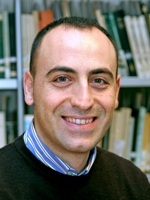 |
| [Return to top] |
Andrei Kirilyuk
Magnetization dynamics and nanomagnetism
Institute of Molecules and Materials (IMM),
Radboud University, Nijmegen, The Netherlands
The main research area of Andrei Kirilyuk is the Condensed Matter Spectroscopy, with the emphasis on the magnetic and electronic structures of bulk and nano-materials at the time- and length scales relevant to the fundamental magnetic interactions. This involves the origin of exchange interactions and magnetism in sub-nanoscale materials; the possibility to manipulate magnetism with light for an ultrafast and robust switching of the magnetization; relation between structure and electronic properties. He is also an expert in the field of (nonlinear) magneto-optics and magneto-optical microscopy, magnetic domain dynamics and nanomagnetism in general, down to the smallest dimensions. He actively develops new spectroscopic methods using the THz range free electron laser FELIX.
| 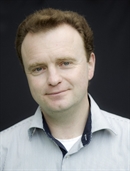 |
| [Return to top] |
Lars Korte
Silicon Heterojunction (SHJ) Based Photovoltaics
1. Silicon heterojunction solar cells: working principle, device design & key challenges
2. Tailoring thin films and interfaces for SHJ solar cells and perovskite/silicon tandems
Helmholtz Zentrum Berlin
Lars Korte studied physics in Göttingen, Germany. He carried out his Ph.D. research at the Hahn-Meitner-Institut Berlin, Germany, and received the
Ph.D. degree in physics from the University of Marburg, Germany, in 2006. He joined the Laboratoire de Chimie Métallurgique des Terres Rares (CNRS), Paris, France, as a Visiting Researcher with a grant from the German Academic Exchange Service (DAAD). Since 2010, he is permanent staff member at Helmholtz-Zentrum Berlin (HZB), Germany. He is currently the Group Leader for a-Si:H/c Si solar cells and advanced contact systems at HZB’s Institute for Silicon Photovoltaics. He has co-authored more than 80 articles in peer-reviewed journals, and co-edited a monography on silicon heterojunction solar cells. His research interests include the electronic properties of thin films and heterointerfaces, high efficiency silicon heterojunction solar cells, and silicon-based tandem cells.
| 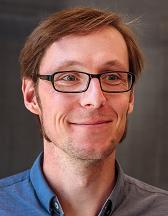 |
| [Return to top] |
Uriel Levy
Silicon Photonics and Plasmonics
NanoOpto group, Applied Physics, Hebrew University of Jerusalem, Israel
The Nano-Opto group at the Hebrew University of Jerusalem in Israel, headed by Professor Uriel Levy conduct experimental research in the field of nanophotonics. The research is focused on the realization and the understanding of miniaturized nanophotonic devices, plasmonic devices, enhanced light-matter interactions, non conventional polarization states of light and optofluidics. Some pioneering contributions include the chip scale integration of devices for enhancing light vapor interactions and the demonstration of plasmonic enhanced internal photoemission photodetectors for the infrared. On top of providing basic understanding and new concepts, the research results can be applied to fields such as optical communication, metrology, optical memories, imaging, sensing and energy.
Professor Uriel Levy joined the department of applied physics and the school of engineering and computer science at the Hebrew University of Jerusalem in 2006, after spending time as a post-doctoral researchers at UCSD. He has been the chair of the applied physics department and he is currently the director of the Hebrew University nanocenter. He published more than 100 papers in leading international journals, and won several prestige research prizes over the years. He is an OSA fellow, a former editor of Optics Express and a committee member of several leading conferences. In 2015 he chaired and hosted the conference SPP7 in Jerusalem. Currently he holds an ERC grant on the topic of light vapor interactions on a chip.
|
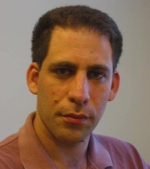 |
| [Return to top] |
Olivier J.F. Martin
Nonlinear Plasmonics
Nanophotonics and Metrology laboratory, Ecole polytechnique fédérale de Lausanne
Olivier J.F. Martin is Professor of Nanophotonics and Optical Signal Processing at the Swiss Federal Institute of Technology, Lausanne (EPFL), where he is head of the Nanophotonics and Metrology Laboratory and Director of the Microengineering Section with about 800 students. He conducts a comprehensive research that combines modelling with nanofabrication and experiments on plasmonic systems, with applications in nonlinear optics, biosensing, security features and optical manipulations at the nanoscale.
Dr. Martin has authored about 250 journal articles and holds a handful of patents and invention disclosures. In 2016 he was awarded the ERC Advanced Research Grant “Nanofactory”, which aims at demonstrating how optical forces can be used to translate additive manufacturing to the nanoscale.
Olivier J.F. Martin regularly contributes to scientific committees for international conferences. In 2005 he co-organized the Latsis Symposium on negative refraction; in 2006 he has organized the Engelberg meeting on Molecular plasmonic devices as well as the 9th International conference on near-field optics, nanophotonics and related technics (NFO-9). |
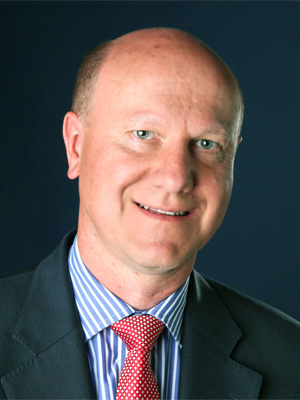 |
| [Return to top] |
Fabian Menges
Thermal Transport and Nanoscale Thermometry
1) Temperature: Its measurement and meaning on the nanoscale
2) The physics of thermal transport and its role in nanotechnology
IBM Research - Zurich laboratory
Fabian Menges is a Post-Doctoral Researcher in the Materials Integration & Nanoscale Devices (MIND) group of the Science & Technology department at the IBM Research - Zurich laboratory. His research is focused on the experimental characterization of thermal energy transfer and conversion processes. He is engaged in the development of tools and techniques for nanoscale thermometry, the study of thermal transport down to the atomic scale, and the fabrication of nonlinear thermal devices.
Prior to joining IBM Research, Fabian studied Materials Science at RWTH Aachen (Germany) and the ETH Zurich (Switzerland), where he received his M.Sc. with distinction. In 2011 he was awarded the Best Interdisciplinary Master Thesis Award of the Micro and Nanoscience Platform at ETH Zurich. In December 2014, he defended his PhD thesis, reporting on the development of a pico-Watt per Kelvin thermal microscope for scanning probe thermometry. In 2016, Fabian received the Swiss Physical Society Award related to Metrology (SPS 2016 Prize) for his work on "Scanning Probe Thermometry of Nanosystems". Fabian is co-organizer of the “Exploring nanoscale physical properties of materials via local probes” symposium within the 2018 MRS Spring Meeting and has recently been awarded a “Branco Weiss Fellowship” to study the thermodynamics of small scale systems.
|
 |
| [Return to top] |
Thomas Michely
Materials with reduced dimensionality: 2D layers, 1D wires, and 0D clusters
Faculty of Mathematics and Natural Sciences, University of Cologne
Thomas Michely studied physics and philosophy at the University Bonn. At the Research Center Jülich in the group of George Comsa he constructed in the late 80ties the first variable temperature scanning tunneling microscope. He used it to study adsorption, surface reactions as well as the temperature dependence of homoepitaxial growth and of the sputtering morphology.
The focus of his current research is on the in situ synthesis of new materials with reduced dimensionality, the investigation of their structural, electronic and magnetic properties, as well as their far from equilibrium processing and modification in view of potential applications. His experimental work is conducted under extremely well-controlled conditions making unambiguous theoretical modeling possible. Materials under concern are for example graphene, hexagonal boron nitride layers, monolayer transition metal dichalcogenides, oxide thin films, sandwich molecular nanowires, and cluster arrays. Key methods of his research are scanning tunneling microscopy and spectroscopy, as well as synchrotron based electron spectroscopies.
Michely has co-authored 150 publications; jointly with Joachim Krug he published a monography on crystal growth far from equilibrium. Several of his students have won international prizes for their work in the group, e.g. the Wayne B. Nottingham Prize.
|
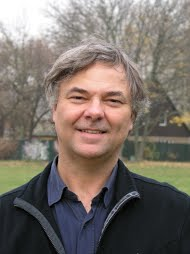 |
| [Return to top] |
Gareth S. Parkinson
Physics and Chemistry of Iron-Oxide Surfaces
Institut für Angewandte Physik, Technische Universität Wien
Gareth S. Parkinson received a masters degree in Physics from the University of Warwick (UK) in 2004, and subsequently completed a PhD in Physics at the same institution in 2007 under the supervision of Prof. D. P. Woodruff. That year he moved to Pacific Northwest National Laboratory (USA) and performed postdoctoral research in surface chemistry under the supervision of Dr. Brice Kay and Dr. Zdenek Dohnalek. In 2009, he joined the group of Prof. Ulrike Diebold at Tulane University (USA), and, when the Diebold group moved to TU Wien (Austria) in 2010, Parkinson was employed as a University Assistant (habilitant) and started his own research group. To date, the group has focused on understanding iron oxide surfaces, in particular the (100) surface of magnetite (Fe3O4). This surface undergoes an unusual reconstruction based on an ordered array of subsurface cation vacancies and interstitials, which stabilizes metal adatoms to temperatures as high as 700 K. In 2015 Parkinson was awarded the FWF START prize to utilize this remarkable model system to study the mechanisms underlying single atom catalysis, a rapidly emerging field of catalysis research. In the same year he became an tenure-track Assistant Professor at the TU Wien, the position he currently holds. In total, In 2016 He was awarded habilitation in Experimental Physics. Parkinson has published 42 papers (including first/last author papers in Science, Nature Materials, Angew. Chem., PRL, ACS Nano, and JACS, and a single author review in Surface Science Reports (2016)), 2 book chapters, and has presented 21 invited talks and 2 keynote talks at international conferences.
|
 |
| [Return to top] |
Erik Reimhult
Biologically Inspired Materials:
1) Functional hybrid core-shell nanoparticles
2) Nanocolloids for health and hazard
University of Natural Resources and Life Sciences, Vienna
Prof. Erik Reimhult got his PhD in Physics and Engineering Physics in 2004 from Chalmers University of Technology. After stints as postdoctoral researcher in Singapore (A*STAR Institute of Materials Research and Engineering) and in Switzerland (ETH Zürich) he moved to Austria in 2010 to assume a full professorship in Nanobiotechnology at the University of Natural Resources and Life Sciences (BOKU), Vienna. In 2011 he became head of the Institute for Biologically inspired and was also head of the Department of Nanobiotechnology between 2011 and 2016. In 2013 Reimhult was awarded an ERC Consolidator Grant for research on nanoparticle-membrane interactions. He is elected member of the Austrian Academy of Sciences Young Academy. Prof. Reimhult’s current research is focused on developing new approaches to synthesize and study the assembly of biomimetic nanoparticles, colloids, polymers and polymer interfaces, and he also has a large interest in the study of colloidal interactions of bacteria. |
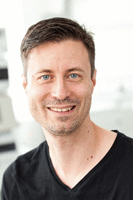 |
| [Return to top] |
Pere Roca i Cabarrocas
Silane plasmas: a wonderful toolbox for the synthesis of nanomaterials
LPICM, Ecole Polytechnique
We design and develop new electrical and optoelectronic devices, covering the fields of solar energy harvesting and storage, innovative sensors based on nanomaterials, and large-area electronic devices. Our research strategy is based on a bobom-up approach, wherein the optimization of materials and processes relies on in-situ real- time diagnostic techniques developed in- house, backed up with ex-situ characterization and numerical modeling. In particular the laboratory has developed innovative optical characterization techniques such as Mueller polarimetry, which we apply to thin lms for microelectronics as well as to biomedical applications such as the diagnosis of cancer tissues. Tip Enhanced Raman Spectroscopy (TERS) has also been recently developed to characterize nano-objects (nanowires, nanotubes, and graphene) and successfully transferred to industry.
|
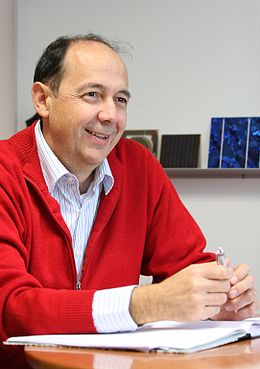 |
| [Return to top] |
Ferdinand Scholz
GaN and related hetero structures
Institute of Optoelectronics, Ulm University, Ulm, Germany
Ferdinand Scholz, obtained the Doctor degree for studies on MOVPE of GaInAs-InP quantum well structures from the University of Stuttgart in 1986. From then until 2003 he was engaged as head of the epitaxial group of the 4. Physikalisches Institut of the University of Stuttgart (Germany). In 2003, he obtained a professorship at the University of Ulm. Main topics of his current research at the Institute of Optoelectronics are growth and investigations of group III nitrides, quantum well structures and nanorods and their applications in device structures. A major activity over the recent years was the coordination of the transregional research group PolarCoN which focussed on non-and semipolar GaN structures for improved light emitters. Currently, he investigates the applicability of such structures for bio-chemical sensors. Ferdinand Scholz is a member of the Deutsche Physikalische Gesellschaft (DPG) and the Deutsche Gesellschaft für Kristallwachstum und Kristallzüchtung (DGKK).
At this summer school, he will talk about the basics and history of GaN and related hetero structures, a semiconductor material class which gained huge importance over the last 25 years and is now the second important semiconductor after silicon. Moreover, some actual research topics will be discussed including semipolar device structures and sensor applications.
|
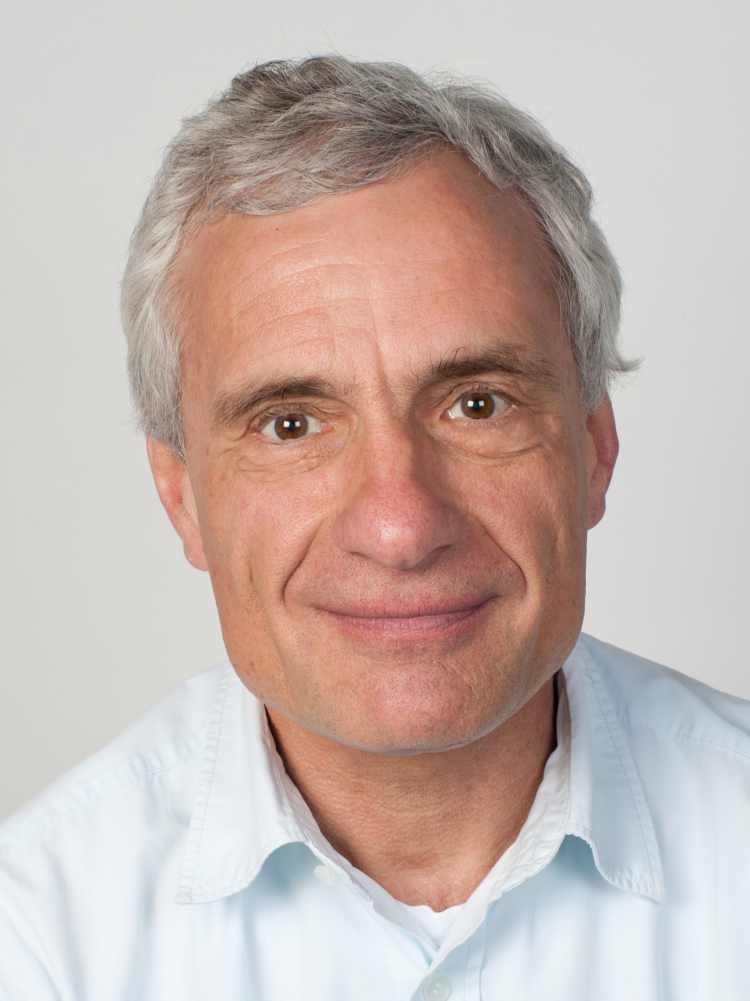 |
| [Return to top] |
Paul S. Weiss
Nanoelectronics:
1) Tutorial on Patterning across Scales
2) Cooperative Function in Atomically Precise Nanoscale Assemblies
California NanoSystems Institute, University of California, Los Angeles
The Weiss Group has traditionally focused on understanding and controlling chemistry and materials at the smallest scales.
They showed how atoms and molecules communicate through substrates on which they sit at greater than chemical distances.
They have exploited self-assembled monolayers as well-defined environments to isolate single molecules for measurements of electron transport,
as a means to improve nanofabrication techniques, and as a way to isolate probe molecules on biospecific capture surfaces.
The group has now diversified to encompass projects that have wide-ranging impact in the field of nanoscience.
Paul S. Weiss is a leading American nanoscientist at the University of California, Los Angeles. He holds numerous positions, including UC Presidential Chair, Distinguished Professor of Chemistry and Biochemistry and of Materials Science and Engineering, and founding Editor-in-Chief of ACS Nano. From 2009–14 he held the Fred Kavli Chair in NanoSystems Sciences and was the director of the California NanoSystems Institute. Weiss has co-authored over 300 research publications and US and international patents.
|
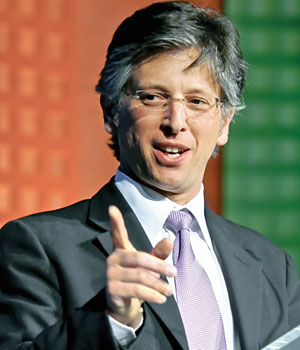 |
| [Return to top] |
Roland Wiesendanger
Revealing spin structures with atomic resolution:
1) Magnetism on the Nanoscale: From the Smallest Building Block Units to Model-Type Atomic-Scale Spintronic Devices.
2) The Exciting Physics of Bottom-Up Constructed Atomic Spin Chains on a Metallic Substrate.
Department of Physics, University of Hamburg
Revealing spin structures with atomic resolution is of central importance to many fields of modern condensed matter physics and spin-based technologies,
.g. nanomagnetism and spin-electronics, spin structures in high-Tc superconductors, or spin textures in quantum Hall ferromagnets. In the past twenty years
a fascinating technique was developed and continuously further improved by Roland Wiesendanger and his team members at the Universities of Basel (Switzerland)
and Hamburg (Germany), which allows for the first time the atomic scale visualization of spin structures and the investigation of the spin- and spatially-resolved electronic
structure down to the atomic level. As a result, structural, local electronic, and magnetic properties of condensed matter can now be correlated down to the atomic scale.
Moreover, Roland Wiesendanger and coworkers could recently demonstrate the first all-spin logic operations on the atomic scale (Science 332, 1062 (2011)).
Roland Wiesendanger has performed pioneering work on spin-polarized scanning tunneling microscopy and magnetic exchange force microscopy, which has made it possible to study magnetism at the level of individual atoms and investigate the atomic-scale spin structure of condensed matter.
R. Wiesendanger is professor of experimental physics at the University of Hamburg and head of the Interdisciplinary Nanoscience Center Hamburg. He also heads the Collaborative Research Center “Magnetism from the Single Atom to the Nanostructure” based at the German Research Foundation.
|
 |
| [Return to top] |
|
|
|
|
|
|